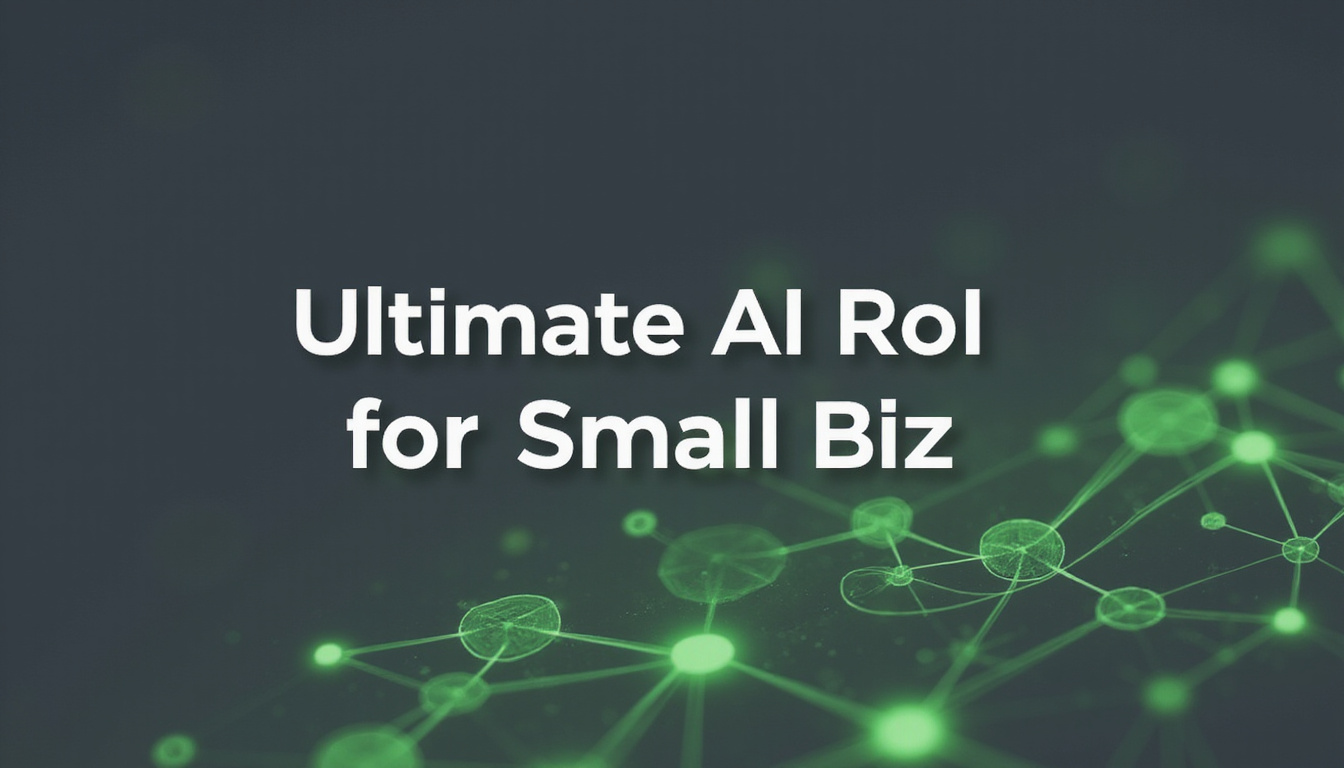Automation ROI for Small Business: A Data‑Driven Guide to Calculating Cost Savings and Investment Value
Estimated reading time: 12 minutes
Key Takeaways
- Average AI automation ROI small business implementations achieve 300-370% returns within 24 months
- Labor cost reductions of 20-40% are typical for repetitive admin tasks with AI automation
- Most SMBs see positive cash flow within 90-365 days for operational automations
- Conservative AI automation cost savings estimates should use the lower bound of benchmark ranges
- The cost of AI implementation SMB projects includes software, integration, training, and hidden costs
- Our interactive calculator and downloadable template simplify how to calculate ROI from AI automation tools
Table of Contents
CFOs and SMB owners face decisions about AI investments with one core question: what is the AI automation ROI small business leaders can expect, and how quickly can they justify the cost? This guide answers that question with a numbers-first methodology, benchmark data, and practical tools — including an embedded ROI calculator and a downloadable spreadsheet template you can use today.
We focus squarely on the cost of AI implementation SMB teams commonly face: one-time setup and integration, licensing, training, and ongoing support. We’ll show how to translate those line items into payback months, ROI %, NPV, and IRR so finance teams can defend decisions to internal stakeholders.
What you’ll get in this guide:
- A clear, repeatable ROI methodology with copy-ready formulas and definitions
- An interactive ROI calculator that models 12-36 month scenarios
- A downloadable XLSX / Google Sheets template that mirrors the calculator logic
- 2-3 anonymized SMB case studies with real-world outcomes and mitigation lessons
Understanding AI Automation ROI in Small Business Context
AI automation ROI small business decision-makers can measure by combining clear cost lines and realistic benefit streams. Below are the definitions, cost components, and benchmarking ranges every CFO should include in a business case.
Definition (copy-ready)
ROI = (Total Financial Benefit − Total Investment) ÷ Total Investment. For AI projects, “Total Financial Benefit” includes labor cost savings, error/defect avoidance, increased throughput or revenue uplift; “Total Investment” includes one-time implementation costs plus ongoing recurring costs over the chosen evaluation period.
Additional key definitions (copy-ready)
- Payback Period: The time required for accumulated net cash flow to equal the initial investment — expressed in months or years
- NPV: Net Present Value = Σ((Benefits_t − Costs_t) / (1 + r)^t) across t periods; r is the discount rate reflecting time value of money
- IRR: Internal Rate of Return is the discount rate at which NPV = 0; used to compare project return to hurdle rates
Cost components — what to budget
- Software licensing/subscriptions (SaaS or on-prem)
- Integration & API development
- Customization & consulting fees
- Hardware (if applicable)
- Staff training & change management
- Ongoing maintenance/support
- Hidden costs (scope creep, downtime, extended vendor SLAs)
Benefits categories
- Labor cost savings (reduced FTE hours)
- Error/defect avoidance (rework, refunds)
- Throughput or capacity increases (more output without more headcount)
- Revenue uplift (conversion rate improvements, retention)
Benchmarks (with sources)
- Average AI automation ROI for SMBs ranges between 300%-370%, with top performers >800% within 24 months. Source: Milwaukee Web Designer Research
- Efficiency gains typically 30-40% and labor cost reductions often ~30% in scoped automation projects. Source: Versalence AI Blog
- Many operational automations show positive cash flow within 90-365 days; complex projects 18-24 months. Source: Milwaukee Web Designer Research
How to Calculate ROI from AI Automation Tools
How to calculate ROI from AI automation tools begins with disciplined cost accounting and conservative benefit estimates. This section provides a step-by-step methodology, a copyable example, sensitivity adjustments, and the interactive ROI calculator you can use immediately.
Step-by-step methodology (copy-ready)
Step 1 — Calculate Total Investment:
- One-time costs = software setup, integration, consulting, hardware, project management
- First-year costs = one-time costs + first-year recurring (subscriptions, support)
- Recurring annual costs = subscription fees + maintenance + cloud compute
Step 2 — Quantify Annual Benefits:
- Labor savings = (hours saved per period × average fully loaded hourly rate)
- Error/defect avoidance = (# errors avoided × cost per error)
- Revenue uplift = (incremental conversions × average order value × margin)
- Operational throughput value = (additional units × unit margin) or cost avoidance from downtime
Step 3 — Define Evaluation Period:
- Recommended periods: 12 / 24 / 36 months. Calculate both single-year and multi-year ROI
Step 4 — NPV and IRR:
- NPV formula and implementation guidance below. Use default discount rate 8% (SMB). Sensitivity benchmarks: 5% and 12%. For a deeper dive into implementing NPV and IRR in your financial model, see our cost-benefit analysis deep dive
Step 5 — ROI formula (copy-ready)
ROI (%) = ((Total Benefit over period − Total Cost over period) ÷ Total Cost over period) × 100
Step 6 — Payback calculation:
- Cumulative cashflow by month; first month where cumulative ≥ 0 is payback month
Example calculation (copy-exact)
Example (typical SMB scenario): Initial one-time investment = $40,000; Annual recurring costs = $7,000; Labor savings = 1,200 hours/year × $35/hr = $42,000; Error reduction savings = $7,000/year; Total annual benefit = $49,000. First-year total cost = $40,000 + $7,000 = $47,000. First-year ROI = (49,000 − 47,000) ÷ 47,000 ≈ 4.3%. Note: ROI accelerates in year two when initial one-time costs are amortized.
Sensitivity & risk adjustments (explicit)
- Create three scenarios: Conservative (benefits −20%), Base case (estimated benefits), Aggressive (+20%)
- Apply adoption risk discount (e.g., reduce benefits by additional 10-30%) if organizational readiness is low
Interactive ROI Calculator
[Calculator placeholder – implement with input fields and dynamic outputs]
When evaluating vendors and tools, consult our AI tools for SMBs overview for vendor features and fit.
Download the ROI spreadsheet template to validate and present your calculations internally.
Real SMB Case Studies: Actual AI Automation ROI Examples
AI automation ROI small business leaders see varies by industry and scope. Below are anonymized summaries that show the range of outcomes and key lessons.
Case A — Manufacturing (Predictive maintenance)
- Business type: Small discrete manufacturer
- Scope: Predictive



